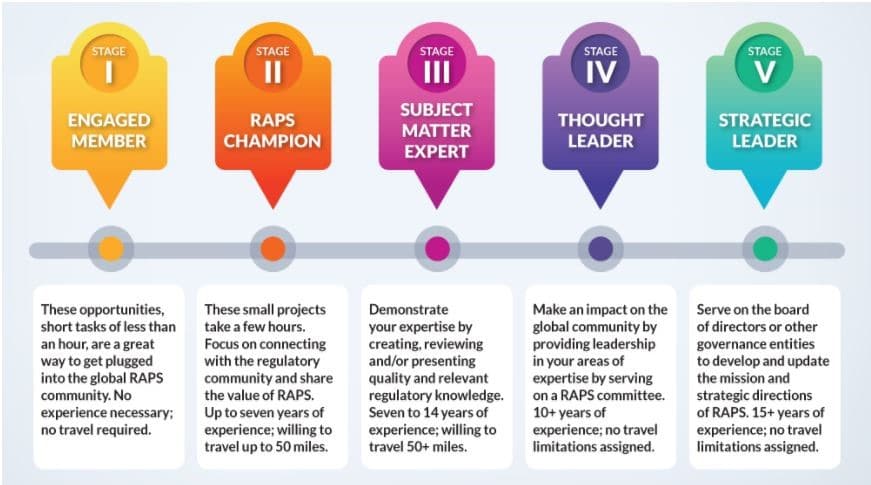ISSUE #1: THE OLD VOLUNTEER MODEL IS STILL IN OPERATION—AND IT DOESN’T WORK WELL.
The old volunteer model is focused on the top of the volunteer pyramid—the titled positions. This model is focused on what we (the association) needs:
We need to flip the model and turn the focus upside down to look at the bottom of the pyramid. What do volunteers want? How do they want to engage?
HOW DO YOU START?
Put on your coaching hat—a hat you probably should wear most of the time. Coach your chapters on the steps they need to take to develop a new volunteer model and bring in fresh faces.
Start from solid ground: what we know from the research on volunteering, for example, why people don’t get involved in their chapter or association:
- Lack of information about opportunities to volunteer
- Conflict with other volunteering activity
- Never asked to volunteer
- Lack of virtual volunteering opportunities
- Lack of short-term assignments
Think about how you can help your chapters overcome these obstacles. Don’t worry and keep on reading because Peggy provides some ideas.
FLIP THE PYRAMID: FOCUS ON AD HOC AND MICRO-VOLUNTEERING.
Another research finding: 60% of volunteers want small, ad hoc jobs
60% is a huge group to bring into the bottom of the volunteer funnel or pyramid. If you can build more opportunities to bring members in this way, into small, ad hoc jobs, you can grow your pool of volunteers for jobs that are higher up the pyramid (or deeper into the funnel). Along the way, these members will develop skills and build deeper relationships with the chapter and with their fellow members.
Peggy said to pay attention to the volunteering language you use and the behavior you reward. She suggests using the word “teams” instead of “committees.” Many members won’t commit to a role on a committee, but they will commit to a role on a team. One word (committee) feels like a long-term, time-consuming commitment, the other feels more freeing.
Embrace ad hoc volunteering and micro-volunteering. Identify ways people can contribute in a more ad hoc manner. Recognize the volunteers who serve in this way. They may be making just as much of a contribution as some committee members but too often at annual events, the committee members are recognized but those who frequently contribute as ad hoc volunteers are not recognized.
Acknowledge and reward chapters who recruit and recognize ad hoc and micro-volunteers. In your chapter reports, do you ask how many members are doing some type of ad hoc or micro-volunteering? Do you ask how many microvolunteering opportunities chapters offer?
HELP CHAPTERS RECRUIT VOLUNTEERS.
A page on the ISACA website says, “Meet Your Neighbors. Volunteer at Your Local Chapter” and explains why and how.
The Volunteering section of the Association of Certified Fraud Examiners’ website lists the benefits of getting in involved with a local chapter.
The Regulatory Affairs Professionals Society emphasizes volunteering of all types on their website. In fact, they display a visual showing a continuum of volunteering, give members the opportunity to complete a volunteer profile and provide a list of volunteer opportunities, many of which are micro-volunteering.
HOW ELSE CAN CRPS HELP THEIR CHAPTERS?
Local Lists: keep a list of local/state volunteer opportunities to refer to members.
CAE Requirements: consider adding local volunteer service to your CAE requirements. With ASAE, you get a certain number of CAE credits from volunteering.
National Recruitment: take care in recruiting for national positions that you don’t poach local talent. Be conscientious about the impact of taking that volunteer’s time. Be a good partner, ask the chapter first.
Engagement: make it easy for members to invite others to volunteer, refer someone, or nominate someone for a particular role.

